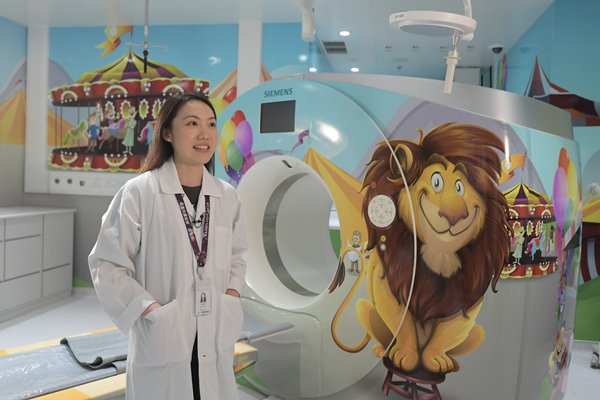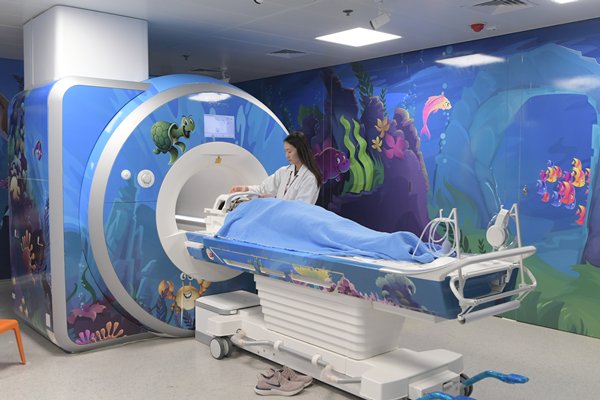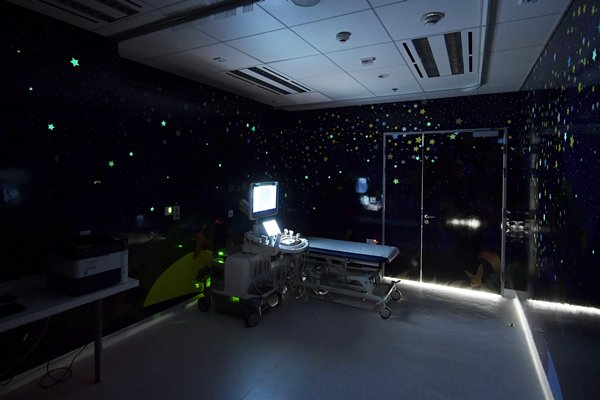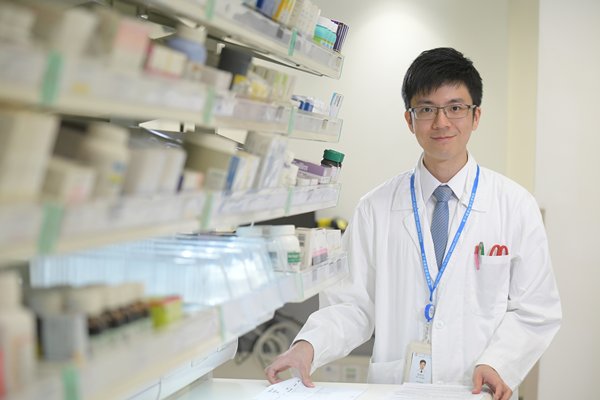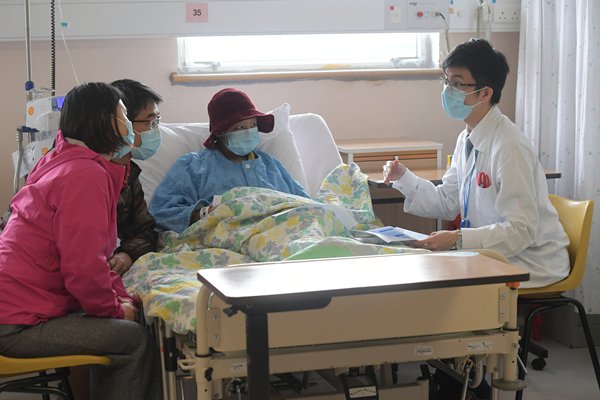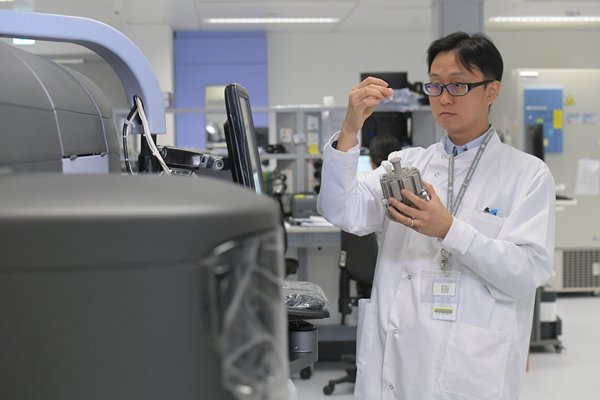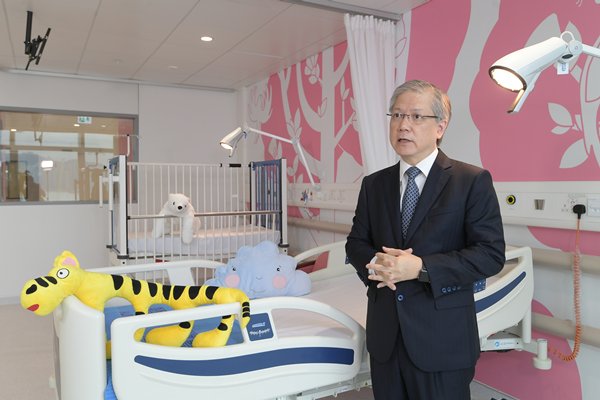Specialist care for special kids
When a child needs to be admitted to hospital, it is an extremely stressful time for the patient and their family.
Hong Kong’s first children’s hospital aims to ensure their treatment is as comfortable and stress-free as possible by adopting a child-centred and family-friendly design to create a home-like and cheerful atmosphere.
Set to open in phases on December 18, the Hong Kong Children’s Hospital (HKCH) is a milestone for paediatric service in the city and will specialise in serious, complex and rare cases.
It pools together expertise and advanced equipment under one roof.
HKCH Radiographer Fiona Mak has worked as a radiographer for more than a decade. With the use of medical imaging equipment and systems, she takes images of the human body, providing diagnostic data for physicians.
Ms Mak joined HKCH in October last year. She visited children’s hospitals in Canada and Australia to bring back the latest and best techniques to help enhance daily operations and workflow.
She explained that treating young patients involves a different set of considerations compared to adults.
“We have had children coming in for procedures where the kid struggled around and the parents were frustrated, and we were not able to proceed with the scan,” Ms Mak said.
Comfortable setting
At HKCH, child-friendly designs have been incorporated into the clinical setting to ease the patients’ anxiety. For example, the MRI (magnetic resonance imaging) room is decorated with an ocean theme and includes an audio-visual system. Children will be given goggles and headphones so they can watch their favourite film during the scan.
Ms Mak and her colleagues also decorated the ultrasound room as the night sky, to help the children feel more relaxed.
“Ultrasound is usually done with the lights dimmed, so we have the night sky with stars on the wall. So when the child lies down on the table, they can see the stars around the room. We have also prepared glow-in-the-dark stars for the children. So they get to put their sticker on the wall once they are done with the procedure. “
Enhanced interaction
At HKCH, clinical pharmacists will not be confined to a back office, but will work in wards as part of the multi-disciplinary team to participate in the patient care process. Pharmacist Hobart Ng will be one of them.
“We have kick-started a patient counselling project for our paediatric oncology patients. We will provide detailed patient counselling for the patients with newly-diagnosed leukaemia. We will go through the treatment roadmap and explain the side effects and management of the chemotherapy,” Mr Ng explained.
“Our goal is to teach them well and let them lead so that the medication therapy could be optimised. Patients can learn to take the medicine at the right time and at the right dosage.”
Support mechanism
Aside from the frontline doctors and nurses, there are other unsung heroes who play an equally important role in patient care, such as those working in the laboratory analysing and testing body fluids and tissues.
Bosco Wong has worked as a Medical Technologist for 12 years. Since 2014, he has been part of HKCH’s commissioning team for the Pathology Department’s early service planning.
“Our work is very important for curing the children. First, we need to help the clinician to diagnose their disorder. Then during the treatment process, we help them to monitor the progress. Finally, our testing results can provide information to estimate the chance of recovery for the patient.”
He added that knowing the special requirements for treating a child is important, as a decision made by the medical technologist can help reduce the need for the patient to undergo a series of uncomfortable tests.
“We need to select suitable equipment for their analysis. As the blood volume of children is relatively small, to prevent the stress created during resampling, we selected some analysers that use only a little sample volume.”
Home-like environment
The hospital’s specialist outpatient clinic for paediatric oncology, nephrology and inborn errors of metabolism will be the first to come into service, while inpatient and ambulatory services will begin gradually in 2019.
However, there is no accident and emergency department or general outpatient clinic in the hospital. All patient cases must be referred by registered doctors in public hospitals or the private sector.
Hospitals can be an intimidating place for youngsters, so the building’s children-centred and family-friendly design provides a truly supportive and therapeutic environment for them and their families.
They can visit the central rehabilitation garden in between the hospital’s two towers to find living sculptures of animals, or they can have fun in the play areas.
Some wards will allow parents to visit the young patients 24 hours a day and provide them with foldable night beds for overnight stays if necessary.
The hospital will also introduce the city’s first hydrotherapy pool with adjustable depth. With a depth ranging from zero to 1.7 metres, the pool allows children of different heights, including those in wheelchairs to receive hydrotherapy.
HKCH Hospital Chief Executive Dr Lee Tsz-leung noted the children may feel nervous and not know what to expect, but the staff will ensure a smooth journey and a comfortable stay.
“Children with serious diseases, requiring major and high-risk surgery will receive treatment here. So we want to provide an environment that does not look like a hospital, a more home-like environment with colourful paintings so their fear and anxiety could be lessened.”
Dr Lee described it as a dream come true for paediatricians and all healthcare providers who care for sick children to see the hospital come to fruition.
“We hope that we could achieve excellence in clinical care, research support for healthcare professionals and also provide more opportunities for the training of our healthcare workers.”
